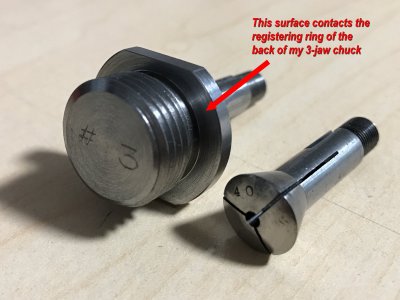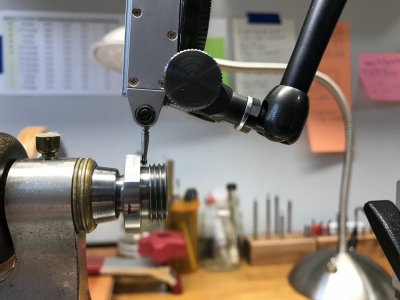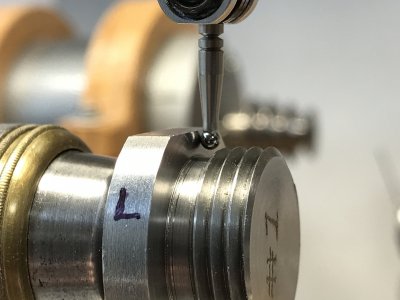I wonder if rotating the chuck with respect to the arbor could help. You would need to mark it and then measure run-out in the four different positions. If there's a difference, use the one with the lowest run-out.
Brian
That's an interesting idea, Brian. Since the chuck has to physically screw down onto the arbor's 3/4-16 threads, I'm guessing I'd need circular shims to fit between arbor & the chuck. Otherwise the chuck would just keep on screwing down until it stops rotating - maybe make three separate circular shims of different thicknesses so I could position it at 3 or 4 different positions.
Anyway, yesterday I took three of my Rivett-to-Sherline arbors and started measuring whatever runout I find, and began writing them down. I used my little Noga magnetic holder (man, I sure like that thing) and a fairly nice Mitutoyo DTI that measures tenths of a thou. It didn't take me long to realize that my arbors only have one area that is relevant to holding the chuck - that would be the flat spot that contacts the "register ring" (is that what they call it?) of my chuck.
Here's the flat spot I measured with my dial test indicator on all three of my arbors:

After some careful positioning my setup looked like this:


Anyway, my three arbors checked out like this:
#1 - zero runout
#2 - .0002" runout
#3 - .0005" runout
So I guess between the three arbors, #1 is the clear winner. After I had measured all three, I re-checked all of them a second time just in case I screwed up somehow. Turned out my first measurements must have been right, because all the second readings were the same as the first readings.
I kind of like the idea of seeing what would happen if I rotated the chuck at 90 degrees, 180 degrees and 270 degrees. I have a feeling nothing would change, but who knows. I'd have to use circular shims between the arbor & the chuck to do it, though, right? Or am I missing something?
Doug




